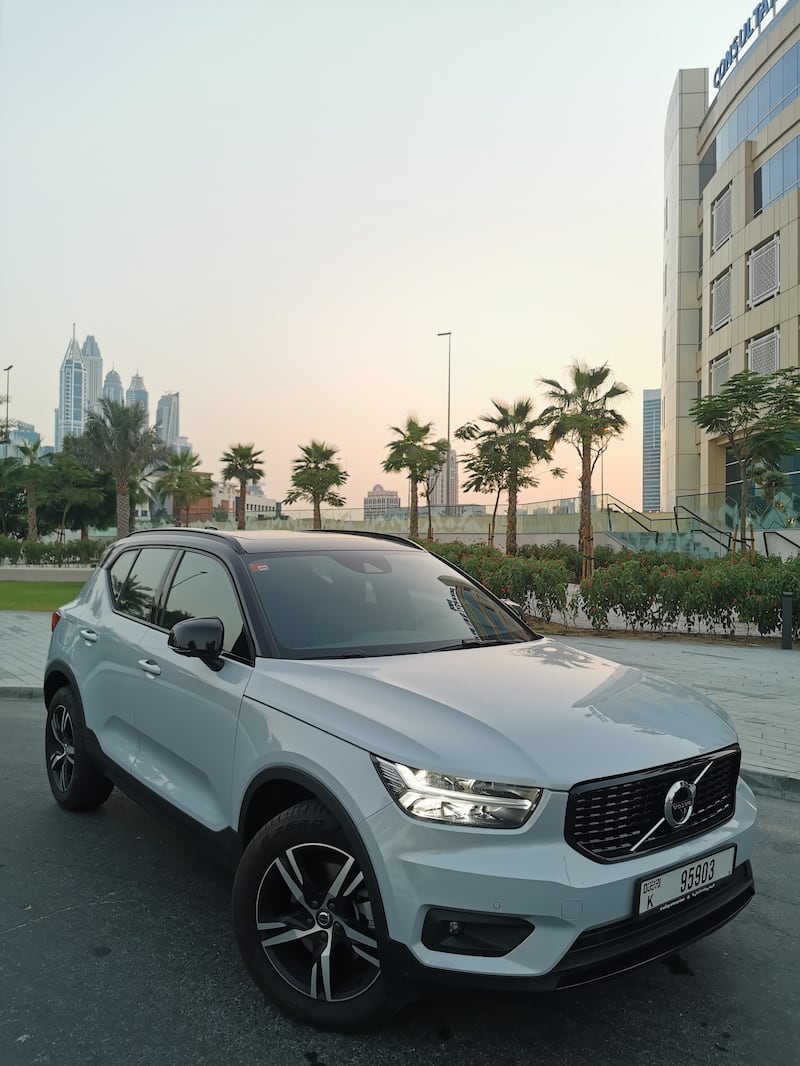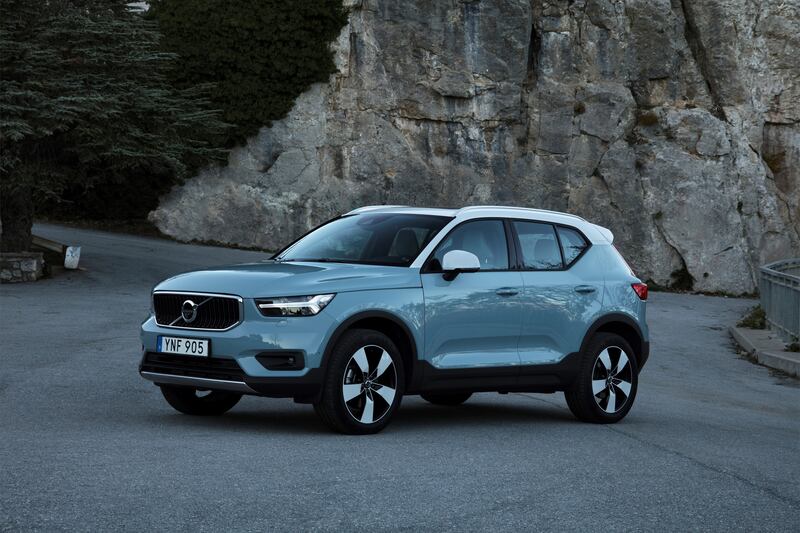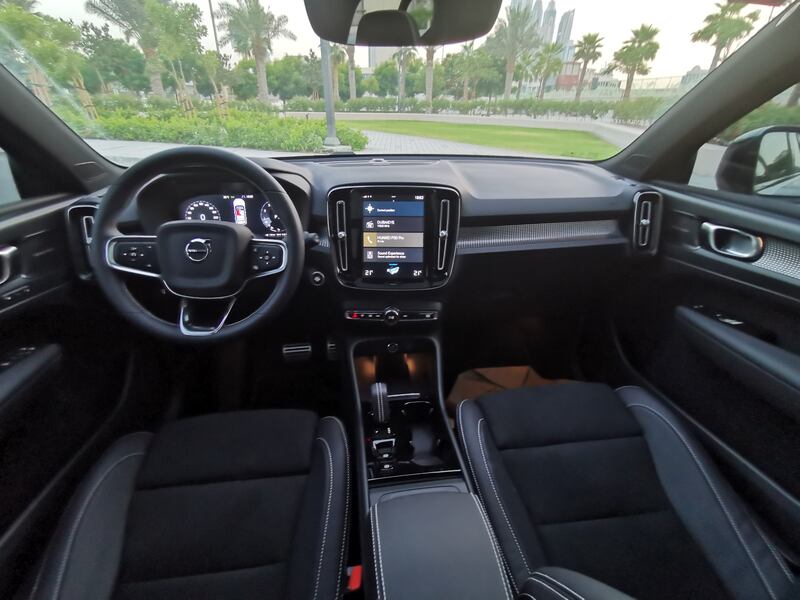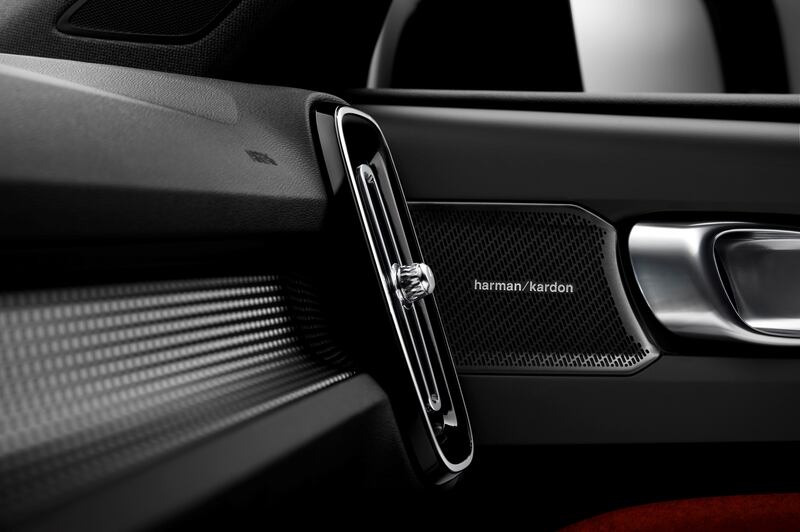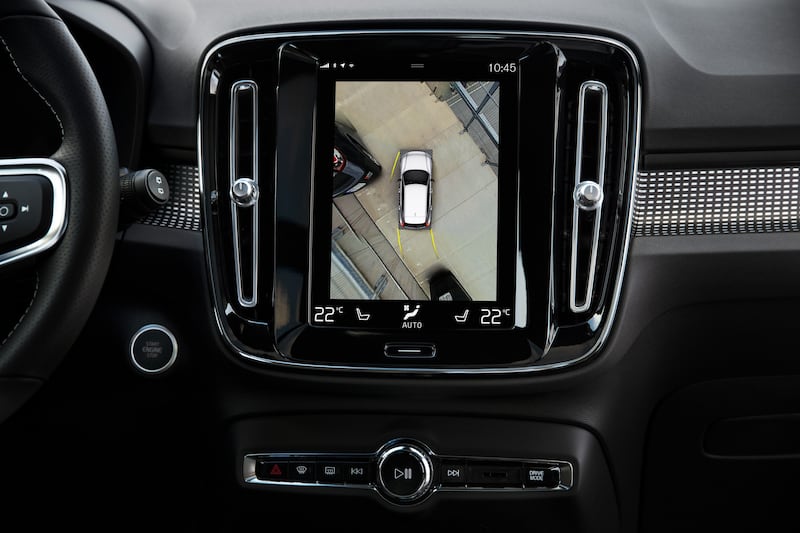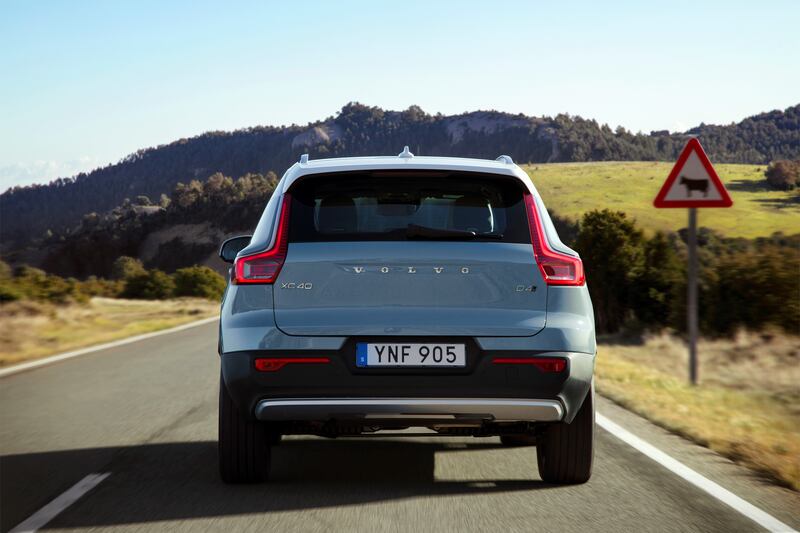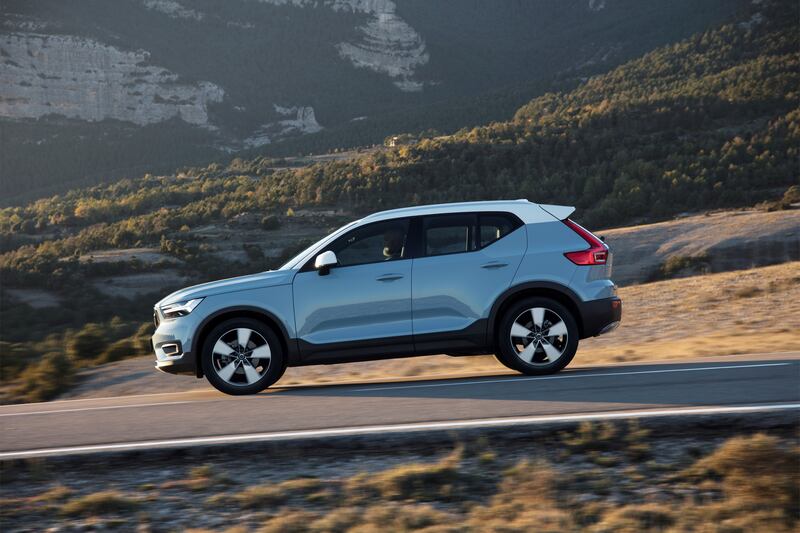Walk into a Volvo showroom and you’ll notice two things. One is that the S60 is now the company’s only saloon, as Volvo has virtually become an SUV company; and two, the SUV fleet, while unmistakably Volvo in look, hasn’t followed the Russian doll concept of its competitors, where seemingly the only difference between models is their scale.
The compact XC40 looks noticeably different from its larger XC60 and XC90 cousins, yet retains Volvo’s design cues such as its Thor’s hammer headlight style and striking LED taillights.
The Volvo XC40 T4 R-Design, to give it its full name, is a class act because it does not pretend to mimic its competitors (think Mercedes-Benz GLA, Audi Q3, BMW X1 and Range Rover Evoque), taking a minimalist approach inside and out, yet raising the bar for subdued quality.
Beneath the skin sits Volvo’s CMA (Compact Modular Architecture) platform, which underpins its every small model, so it has the design freedom of not being a shrunk version of the XC and uses a more cost-efficient four-link, steel rear suspension instead of the composite five-link units in the bigger cars.
The CMA platform also keeps the price down as it’s shared with premium Chinese-Swedish brand Lynk & Co that’s also owned by Volvo’s parent, Geely, but was engineered in Sweden, using Volvo's transversely-mounted, turbocharged, two-litre, four-cylinder engine.
Applying the same approach that brought us the light and airy interiors of the XC60 and XC90, the XC40 eschews similar levels of cabin sophistication with an interior that looks and feels luxurious and expensive, yet also informal and pleasant.
The front seats are some of the best you’ll find in a family SUV, offering a wide range of adjustment for tilt and height with four-way electric lumbar adjustment. You sit high with a good view of the road ahead, helped by the relatively slim windscreen pillars and large door mirrors. This doesn't pretend to be a low-slung crossover and feels like a proper SUV from behind the wheel, as opposed to a beefed-up hatchback.
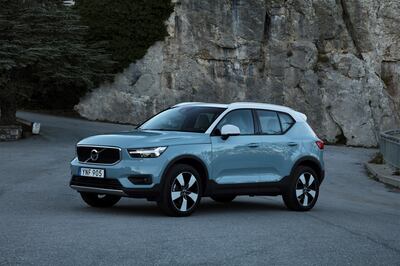
However, the kicked up rear window line cuts into the rear vision, so its parking sensors on the back are essential and are helped by a 360º camera for tight spaces.
Narrow, vertical air vents further differentiate the Volvo from its contemporaries and look good against unique, decorative foils that form the dash, scalloped out of the main surface. Its chequerboard, machined aluminium look is an eye-catcher and different from the usual timber veneers, reflecting light during the day and backlit at night.
In the centre is a 9-inch, portrait touchscreen that operates the majority of the car’s functions including the entertainment, navigation, heating, ventilation, air conditioning and vehicle settings. A row of buttons sits beneath for quick access to the volume, hazard lights and window demisting.
As with other Volvos that use this system, while it has good graphics, it’s not easy to use when on the move. The absence of physical buttons for the climate AC and radio, for example, is annoying, as altering settings on the move require you to take your eyes off the road. Having to delve into the infotainment touchscreen to adjust virtually everything, places form above function and is very unlike Volvo. A simple rotary control is easier to use on the go and, in most cases, safer as well.
Having said that, mirroring Apple CarPlay and Android Auto from your phone is always welcome as is the wireless phone charging and its 13-speaker Harman Kardon premium sound system.
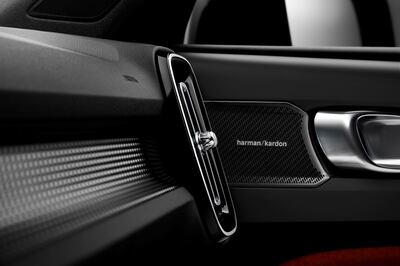
Even with the full-length panoramic sunroof, head room is exceptional, and overall interior space and storage compartments are generous. Having said that, the rear seat area falls short of the Volkswagen Tiguan, where the short seat cushions force taller adults to sit more upright to use less rear legroom.
At 2,702 millimetres, the XC40’s wheelbase is only 72mm shorter than the XC60’s, so although it might be a smaller model, it does not come with a huge practicality compromise. There’s also 432 litres of rear stowage available that, again, is less than the Tiguan, but still good enough for a few suitcases.
The R-Design model tested was fitted with 20-inch alloys and a slightly stiffer suspension, which does not make the car too tight over bumps, but reduces the bodyroll from its higher centre of gravity and even around town over speed humps.
Volvo promotes the XC40 R-Design as its most agile SUV, but doesn’t go so far as to say it’s a sports SUV or even the most driver-focused option on the market. It handles perfectly well if you drive it in a relaxed manner, as nearly every owner will, but if you do press on, that bodyroll will eventually kick in as it moves outside its comfort zone.
The steering is consistent with its medium pacing, and feels light but isolated from the influences of bump and traction. On the highway, it gave a silky, quiet ride to match its impressive cabin sealing and its Pilot Assist lane keeping, and radar cruise control systems worked equally as well as they do on the bigger models.
The XC40 is pragmatic, dependable, comfortable and secure, and instead of goading you into vigorous driving, keeps you calm, so is very much the quintessential Volvo. At the same time, it’s polished and stylish in a subdued way, so what you have in the long term is a desirable product backed with substance.
